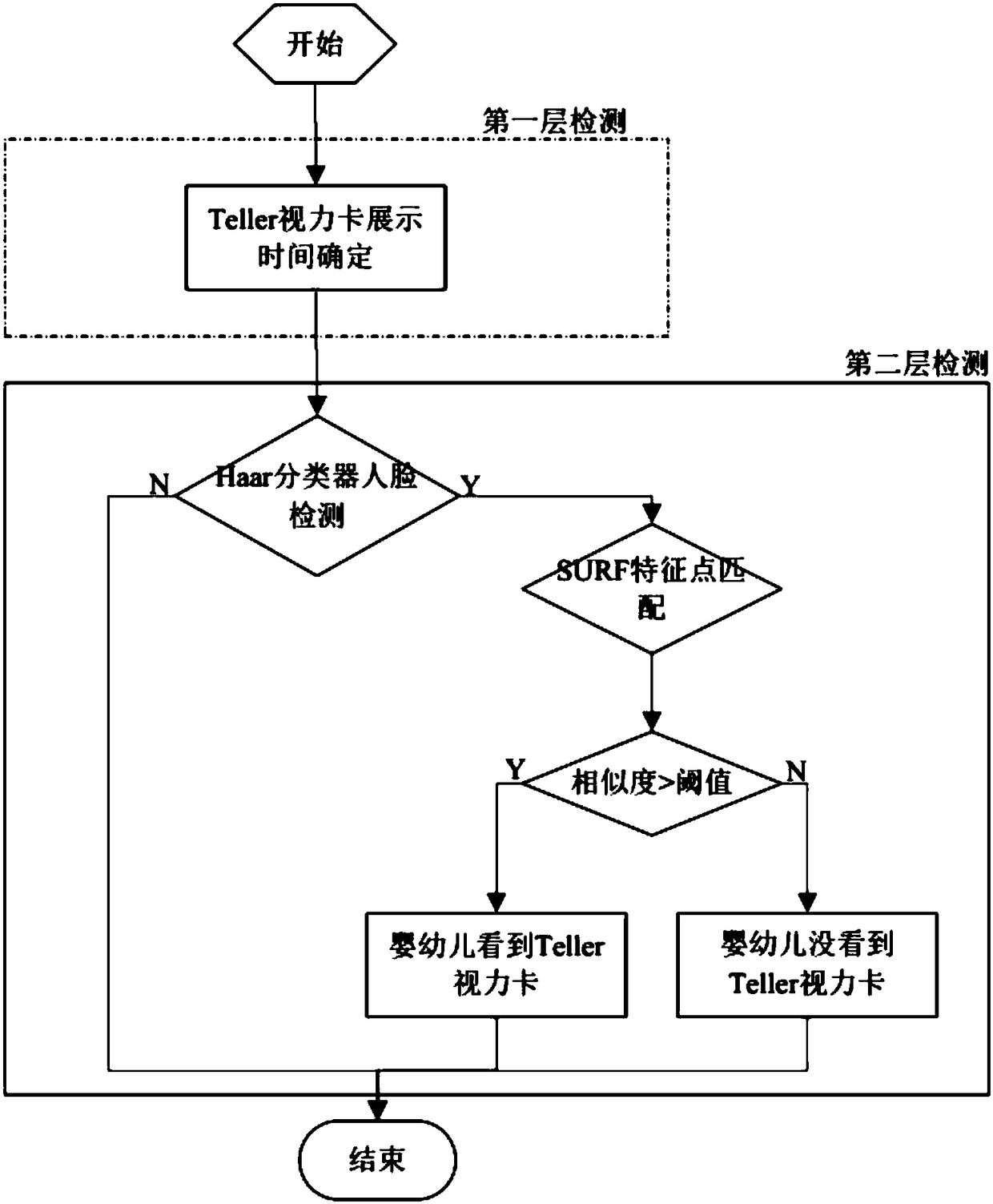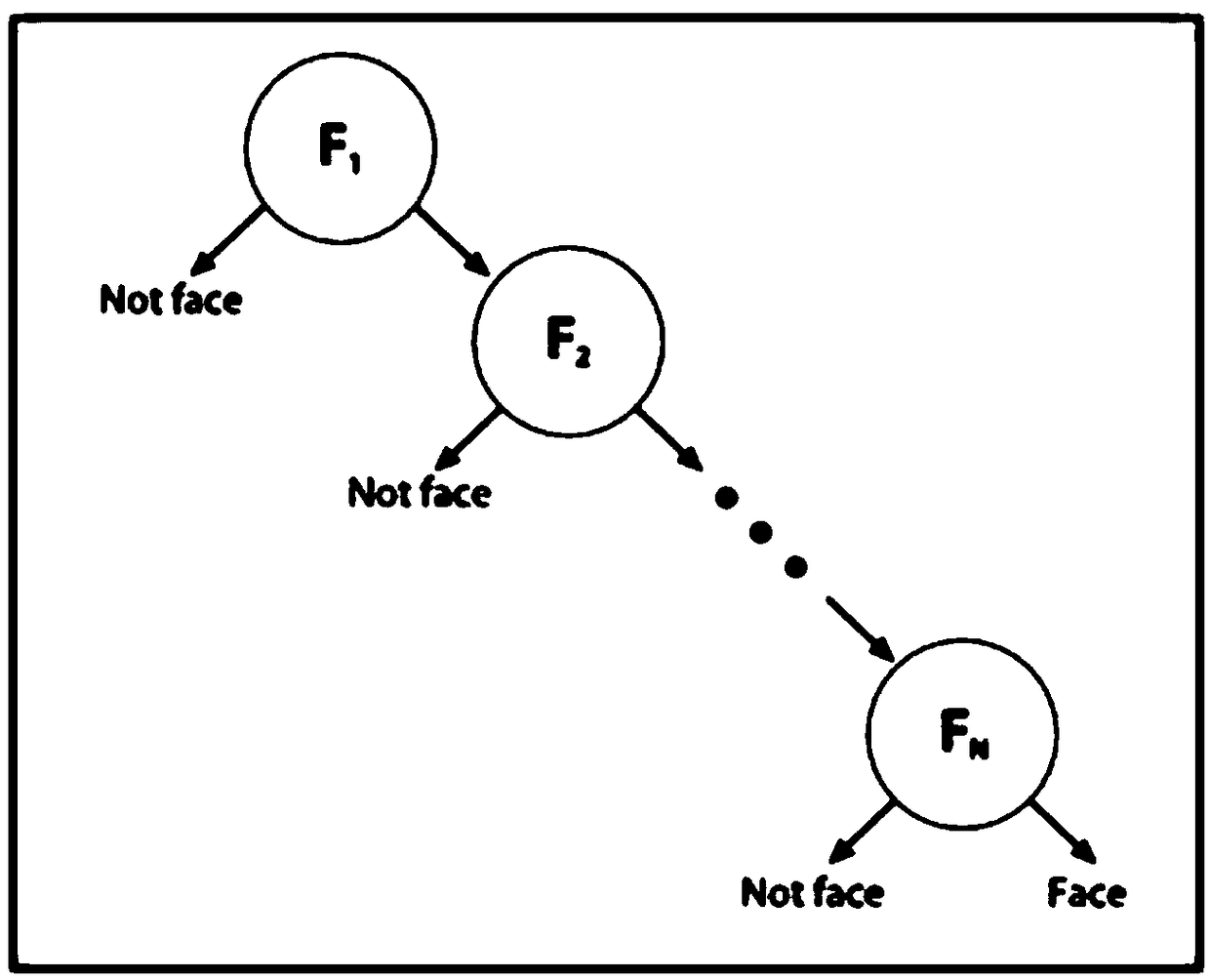A method for automatic detection of infant vision
An automatic detection, infant technology, applied in the field of image processing, can solve the problems of unsatisfactory detection accuracy, high misjudgment rate, low misjudgment rate, etc., to reduce computer processing data, low misjudgment rate, and improve detection accuracy Effect
- Summary
- Abstract
- Description
- Claims
- Application Information
AI Technical Summary
Problems solved by technology
Method used
Image
Examples
Embodiment 1
[0037] Such as figure 1 As shown, the method provided by the invention mainly comprises the following steps:
[0038] S1. Synchronously record and show the video image of the Teller vision card and the video image of the person being tested;
[0039] S2. Determine the position of the vision card display window and the corresponding vision card display period by showing the video image of the Teller vision card, and extract the segment corresponding to the vision card display period from the video image of the tested person to perform the operations of steps S3 to S8;
[0040] S3. Use the AdaBoost algorithm to train a strong classifier with the best face recognition effect;
[0041] S4. Cascading the strong classifiers to obtain a screening cascade classifier;
PUM
 Login to View More
Login to View More Abstract
Description
Claims
Application Information
 Login to View More
Login to View More - R&D
- Intellectual Property
- Life Sciences
- Materials
- Tech Scout
- Unparalleled Data Quality
- Higher Quality Content
- 60% Fewer Hallucinations
Browse by: Latest US Patents, China's latest patents, Technical Efficacy Thesaurus, Application Domain, Technology Topic, Popular Technical Reports.
© 2025 PatSnap. All rights reserved.Legal|Privacy policy|Modern Slavery Act Transparency Statement|Sitemap|About US| Contact US: help@patsnap.com



